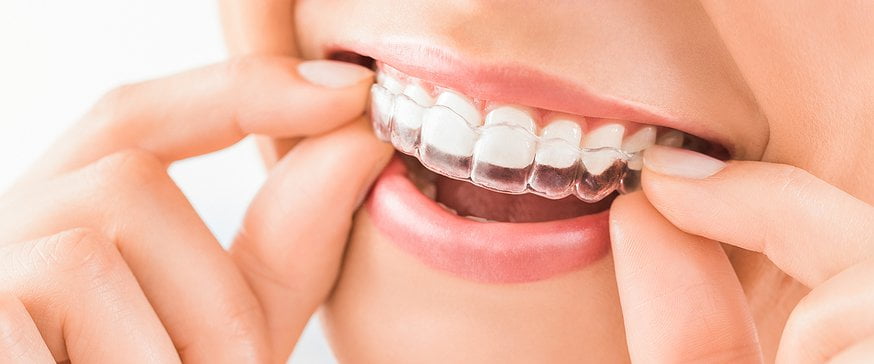Getting My Legacy Orthodontics To Work
Getting My Legacy Orthodontics To Work
Blog Article
The 7-Second Trick For Legacy Orthodontics
Table of ContentsLegacy Orthodontics - Questions7 Simple Techniques For Legacy OrthodonticsLegacy Orthodontics for DummiesLegacy Orthodontics Can Be Fun For AnyoneFacts About Legacy Orthodontics Uncovered
In addition, we offer flexible treatment routines, flexible payment alternatives and an enjoyable, delightful experience.An orthodontist is a dental professional trained to diagnose, protect against, and treat teeth and jaw abnormalities. They fix existing problems and are educated to recognize issues that might develop in the future. Orthodontists collaborate with people of all ages, from children to adults. People typically link a best smile with healthiness.
Malocclusion, or misaligned teeth, can bring about dental problems, including tooth degeneration, gum disease, and tough or agonizing chewing. Not every person is birthed with straight teeth. If you have a bad bite or large areas in between your teeth, you may intend to seek advice from a dental practitioner focusing on orthodontic treatment.
Rumored Buzz on Legacy Orthodontics
( Photo Credit Score: DigitalVision/Getty Images) Orthodontists utilize fixed and detachable oral gadgets, like braces, retainers, and bands, to alter the position of teeth in your mouth. Orthodontic therapy is for dental problems, consisting of: Uneven teethBite problems, like an overbite or an underbiteCrowded teeth or teeth that are as well far apartJaw misalignmentThe goal of orthodontic therapy is to enhance your bite.
A healthy bite ensures you can eat, eat, and talk effectively. While you may consider orthodontists as primarily for children or teens who require braces, they can deal with oral problems at any kind of age. Orthodontists attend college, oral institution, and orthodontic school. After college graduation, they spend 2 or 3 years in an orthodontic residency program.
, but not all dental professionals are orthodontists. They focus on 2 locations: How to properly and securely move teeth Exactly how to effectively lead advancement in the teeth, jaw, and faceOnce an orthodontist has completed training, they have the choice to end up being board certified.
The Of Legacy Orthodontics
Malocclusion leads to tooth overcrowding, a twisted jaw, or irregular bite patterns. Malocclusion is generally treated with: Your orthodontist affixes steel, ceramic, or plastic square bonds to your teeth.
If you have just minor malocclusion, you may be able to use clear dental braces, called aligners, as opposed to typical dental braces (https://www.provenexpert.com/legacy-orthodontics/). Some people need a headwear to aid move teeth into line with stress from outside the mouth. After braces or aligners, you'll need to use a retainer. A retainer is a customized device that keeps your teeth in location.
They can create extra space in the mouth without having to draw teeth. Orthodontists make use of more helpful hints wires, medical screws, or plates to sustain your jaw bone.
You might require to see an orthodontist if you have: Crowding or not sufficient space for all of your teethOverbite, when your top teeth come your base teethUnderbite, when your bottom teeth are as well much forwardSpacing or issues with gapsCrossbite, which is when your upper teeth fit behind your base teeth when your mouth is closedOpen bite or a vertical space in between your front bottom and top teethMisplaced midline, when the center of your bottom and upper teeth don't line up Correcting an oral malocclusion can: Make biting, chewing, and speaking easierImprove the proportion of our face and your total appearanceEase pain from temporomandibular joint disordersSeparate your teeth and make them simpler to clean up, assisting avoid dental caries or cavities It's often a dentist that initially notices misaligned teeth during a regular exam.
Legacy Orthodontics - An Overview

During your initial orthodontic assessment, you'll likely have: A dental examPhotos taken of your face and smileDental X-raysPanoramic (360 degree) X-rays of your face and headImpressions to produce mold and mildews of your teethThese tests will certainly help your orthodontist recognize just how to proceed with your treatment. leesburg orthodontics. An orthodontist is a dental expert who's had training to treat your teeth and jaw
Orthodontists may execute surgical treatment, exams,X-rays,and more to help you acquire a more comfortable, much healthier smile. An orthodontist is concentrated on your bite, so something like a broken tooth would certainly be dealt with by a dental professional. Orthodontists are dental professionals yet not all dental practitioners are orthodontists. Orthodontists are concentrated on your bite, or the means your teeth meshed, and the straightness of your teeth.
Ever questioned exactly how celebs constantly seem to have perfectly straightened teeth? The response frequently lies in the experienced hands of an orthodontist. But what precisely does an orthodontist do? Orthodontists are oral specialists that concentrate on remedying irregularities in the teeth and jaws. Their knowledge exceeds just creating an attractive smile; it reaches boosting your general oral health and wellness and feature.
Rumored Buzz on Legacy Orthodontics

While braces are one of the most frequently recognized orthodontic treatment, orthodontists have a varied toolkit at their disposal. The specific method chosen depends on the extent of the instance, the person's age, and individual choices. These tried-and-true dental braces use a system of brackets bound to the teeth and attached by cords.
Clear aligners, like Invisalign, are a preferred option for patients looking for a more discreet therapy alternative. These detachable trays are customized to considerably change the teeth's position. Headgear might be utilized in combination with dental braces or aligners to apply additional targeted forces, particularly for remedying jaw inconsistencies. In situations of slim jaws, palatal expanders can be made use of to develop room for appropriate tooth positioning.
Report this page